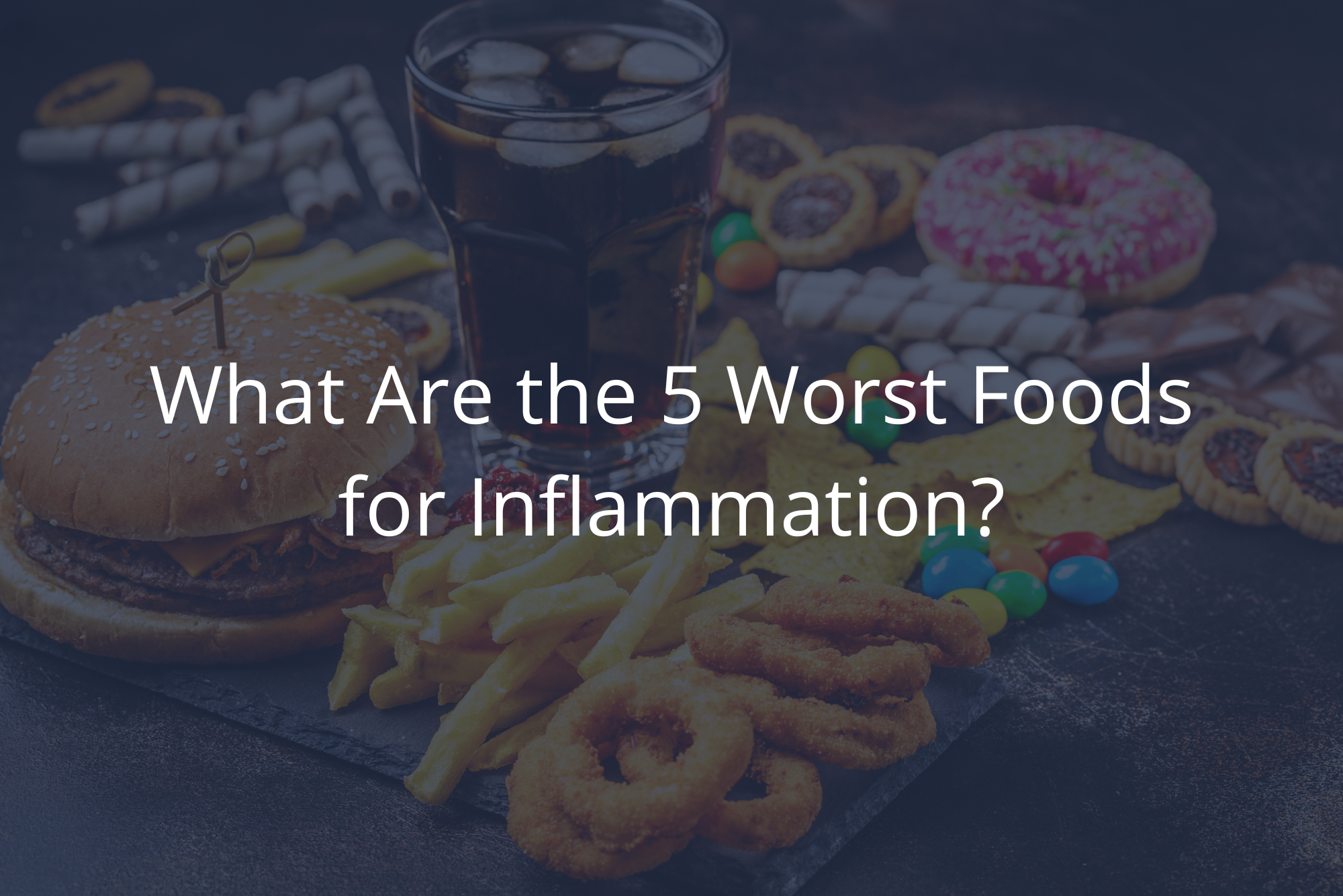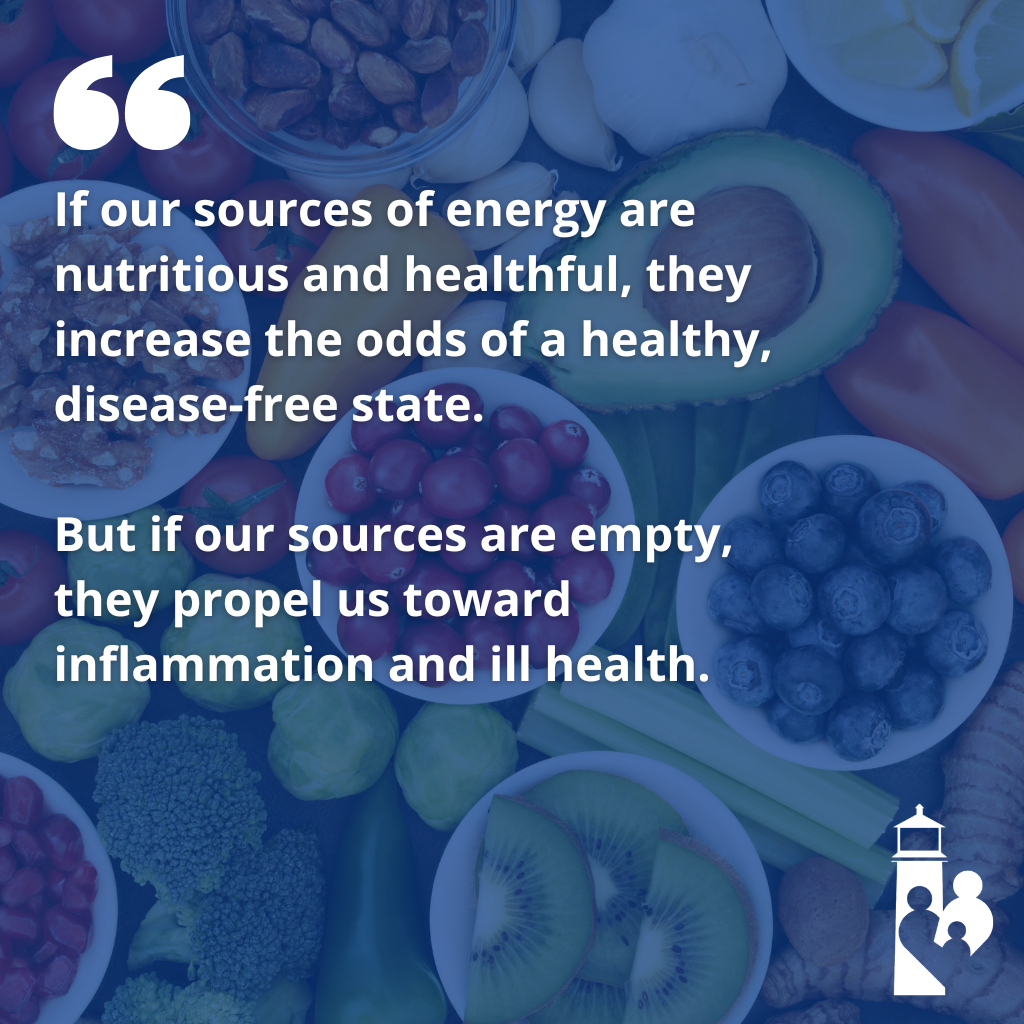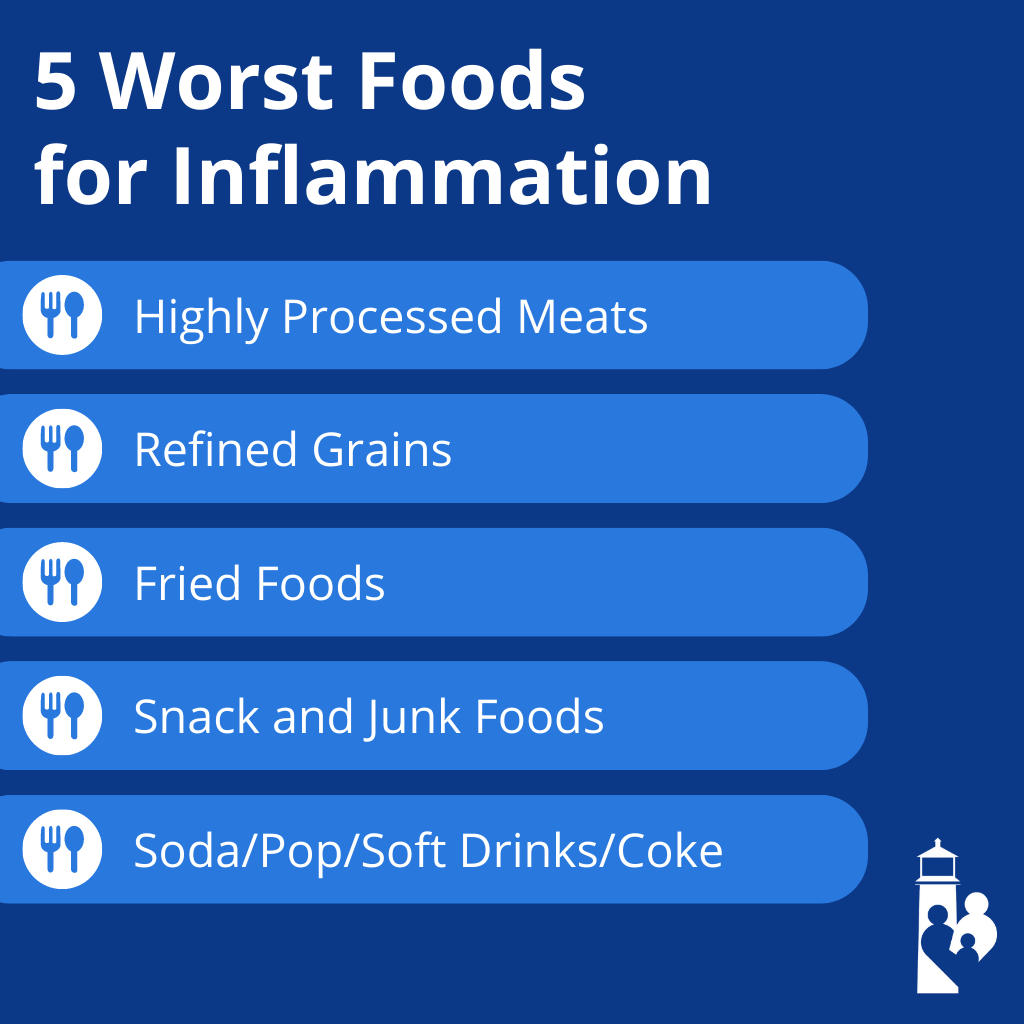
In the crusade for a healthy life, there are four disease-causing pitfalls we have to mitigate. Every human disease process is traceable back to one (or more) of these four dysfunctions: inflammation, insulin resistance, oxidative stress, and catabolic physiology.
To combat against these pitfalls, we make use of the four pillars of health — sleep, exercise, nutrition, and stress elimination.
Today, we’re looking at the relationship between one of these pitfalls — inflammation — and the pillar of nutrition. Specifically, we’re asking, What are the 5 worst foods for inflammation?
Caution: Don’t Feed the Inflammation
To explore the relationship between nutrition and inflammation, let’s first examine what we mean by inflammation — what it is and why it’s harmful. In a nutshell, inflammation is a normal, short-term process that aids in healing.
The problem comes with long-term inflammation, which wreaks havoc on our physiology, damaging our body structures. Unchecked inflammation can lead to undesirable health outcomes, such as osteoarthritis, stomach ulcers, and/or cancer, to name a few.
Unfortunately, many people unknowingly keep their bodies in a state of ongoing inflammation by consuming nutrient-devoid substances. (It’s hard for me to call such things food.)
Certain so-called foods not only don’t nourish us, but they also actively contribute to elevated states of inflammation.
Food and drink are our literal fuel. Everything we put into our bodies’ proverbial tanks is what our bodies have to use as energy — and also as building blocks.
The body breaks down food and drink and turns that fuel into… more of itself. It makes more blood, more muscle, more cells, more hormones, more bilirubin, more immunoglobulin — in short, more of everything we need.
If those sources of energy are nutritious and healthful, they increase the odds of a healthy, disease-free state. But if our sources are empty, they propel us toward inflammation and ill health.
How to Remove Nutrition From Food: Processing
America may be the home of the brave, but it’s also home to a mind-boggling amount of processed foods. There are many social and economic reasons behind the fact that Americans have embraced ubiquitous processed foods, but regardless of the reasons, we can’t overlook the consequences.
One major reason for food processing is to increase a food’s durability, or shelf life. Since oxidation leads to rot, processing removes the oxidation factor to create more shelf-stable products.
Unfortunately, we don’t get long-lived foods without a paying a price — nutrition. The process of dealing oxidation a blow also removes the nutritional value from food. So why do nutrition labels show the presence of vitamins and minerals, then?
If you think back on all the food labels you’ve read, can you remember seeing the word “enriched”? Foods lose so much of their identity in processing — vitamins, minerals, color, texture — that what comes out is often a colorless, shapeless mass of nutritionless slurry. To replace the lost nutrients, manufacturers then add these back in artificially, a process called “enriching.”
Further, even as they add other components like color and shape, manufacturers also introduce preservatives. Preservatives are chemical antioxidants — not to be confused with good antioxidants. They’re synthetic, and they prevent rotting, adding another layer of longevity to food items, as well as another artificial barrier for your body to work through in digestion.
The Consequences
Where does all this lead? Stores are full of processed foods with an increased product shelf life, which — in turn — means more food for the masses (and, of course, increased company profits). Consumers get products that fill us up, but that don’t do anything positive for our bodies. In fact, they actually cause harm.
Imagine, for example, you eat a doughnut. It’s made of processed, enriched dough fried in processed oil. You like the crunchy exterior and the warmth. The sugar on top tastes delicious. The doughnut disappears pretty quickly.
It increases your blood sugar, giving you a quick burst of energy and making you feel good for a little while. But then your body needs to break down everything in that doughnut — both that which has been processed beyond all recognition, and that which has been added.
As you might imagine, that isn’t easy. Oxidative stress ensues as your body fights to work through so many unfamiliar and breakdown-resistant ingredients, and it causes inflammation.
5 Worst Foods for Inflammation
So far, we’ve established that processed foods in general cause inflammation. But what are the five worst foods for inflammation? Below is a list of the worst offenders.
1. Highly Processed Meats
Most of the meat Americans have access to is conventionally raised on concentrated animal feed operations (CAFOs). There are many problems with this method of meat production, not the least of which is the state of the animals.
Because these animals are confined, they’re unable to build muscle and are highly fatty. They are fed highly inflammatory diets full of pesticides and bulk-inducing grains (versus grass), and their systems are riddled with stress hormones. How can we expect to get healthy food from such an unhealthy source?
The problem further increases with the conventional processing of meats, such as lunch meats, bacon, and hot dogs. I’d like to note here that “processing” can mean many things. Processing in itself is not a unilateral negative, but many forms of processing prioritize shelf stability over human health.
Nitrates and nitrites are commonly added to meats as preservatives. These ingredients are not friendly to humans, as various studies have indicated, causing digestive problems and even contributing to cancer.
2. Refined Grains
As with meat, most grain in this country is a commodity. Production focuses less on nutrition and more on quantity and creating a feeling of fullness.
Pure, whole grains are excellent for most people’s health. But many-to-most people are eating refined grains, such as white bread and white rice. These have had all the nutritional benefits removed from them — the fiber, the complex carbohydrates — and you’re left with nutrient-sparse food.
After this process, the grains are enriched with vitamins. This can actually be unhealthy, causing inappropriate levels of vitamin consumption.
3. Fried Foods
Foods lightly floured in whole grain flour and cooked in a healthy, minimally processed oil would be one thing. Unfortunately, that’s not how frying is done.
Most restaurants use highly-processed commodity oil in their fryers, which they typically do not change out daily. Those oils are highly pro-inflammatory and even carcinogenic.
4. Snack and Junk Foods
Chips, cookies, crackers, candy… I think you know what I’m going to say here. These items are typically loaded with sugar, sodium, low-quality oils, and/or refined and nutritionally bereft ingredients, all of which cause inflammation.
5. Soda/Pop/Soft Drinks/Coke
Whatever you call it in your neck of the woods, that carbonated sweet drink contains a staggering amount of processed sugar. A single, solitary 12 oz. can of Coke contains 39 grams of sugar. That’s roughly eight teaspoons, or for a better visual, eight sugar cubes.
Most of us wouldn’t dream of dropping eight teaspoons of sugar into our coffee or tea, but it somehow goes down just fine when concealed in a soft drink. All that sugar — not to mention the many other nutritionally void ingredients — causes quite a bit of inflammation in the body.
5 Worst Foods for Inflammation: What’s the Alternative?
When you eat and drink, you’re providing your body with fuel and building blocks to function. If you feed yourself rubbish — especially if you do so habitually — your systems will suffer.
Remember, everything in a box is processed in some way. All those glossy containers lining the center aisles of the grocery store are just bait, luring you in for a helping of harmful inflammation.
Instead of getting snared, look for healthy, unprocessed foods to bring home. Sticking to the perimeter of the grocery store is one trick to keep these anti-inflammatory food options front and center, as is looking for organic, grass-fed, free-graze meats and whole, organic grains.


